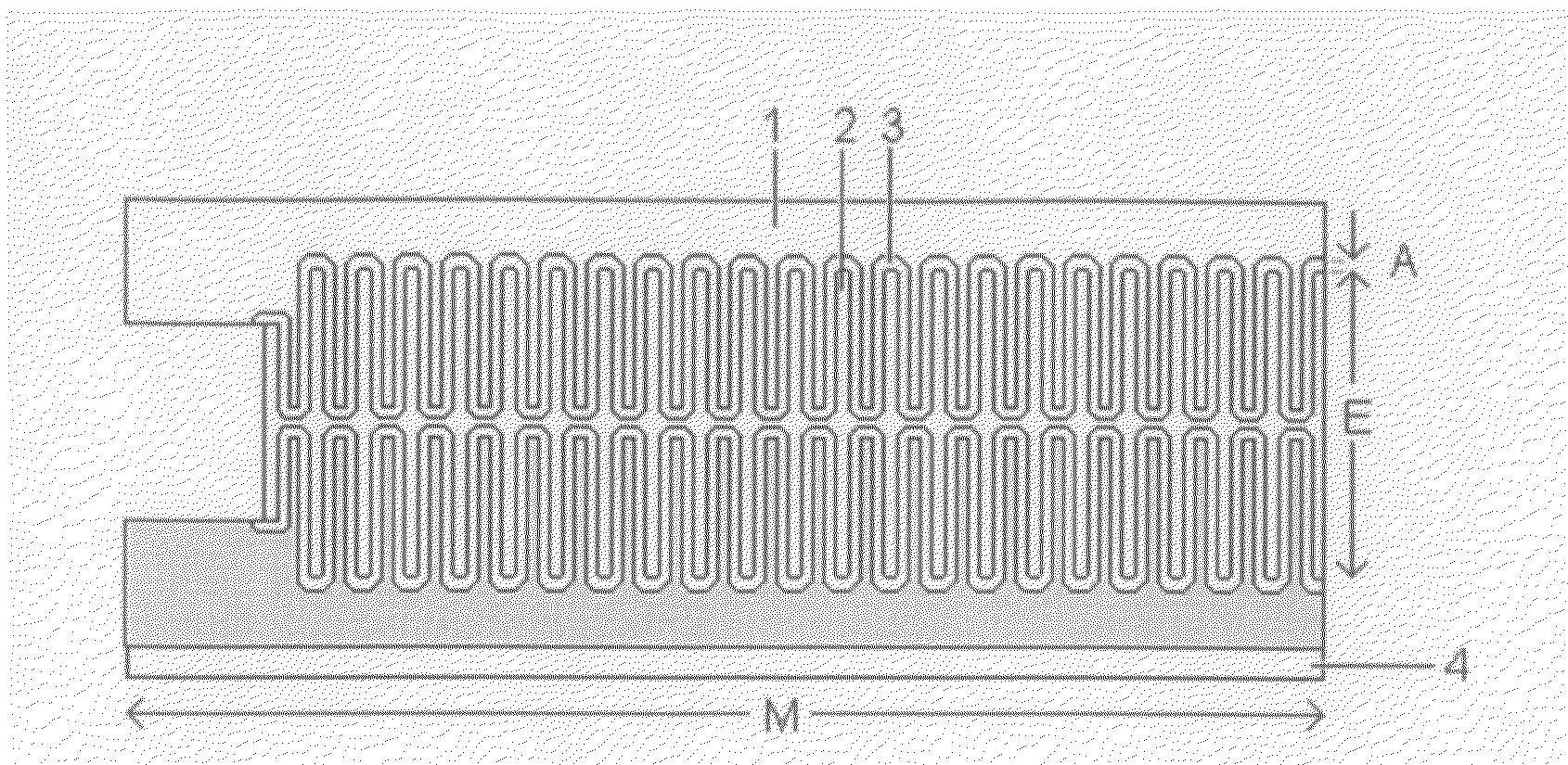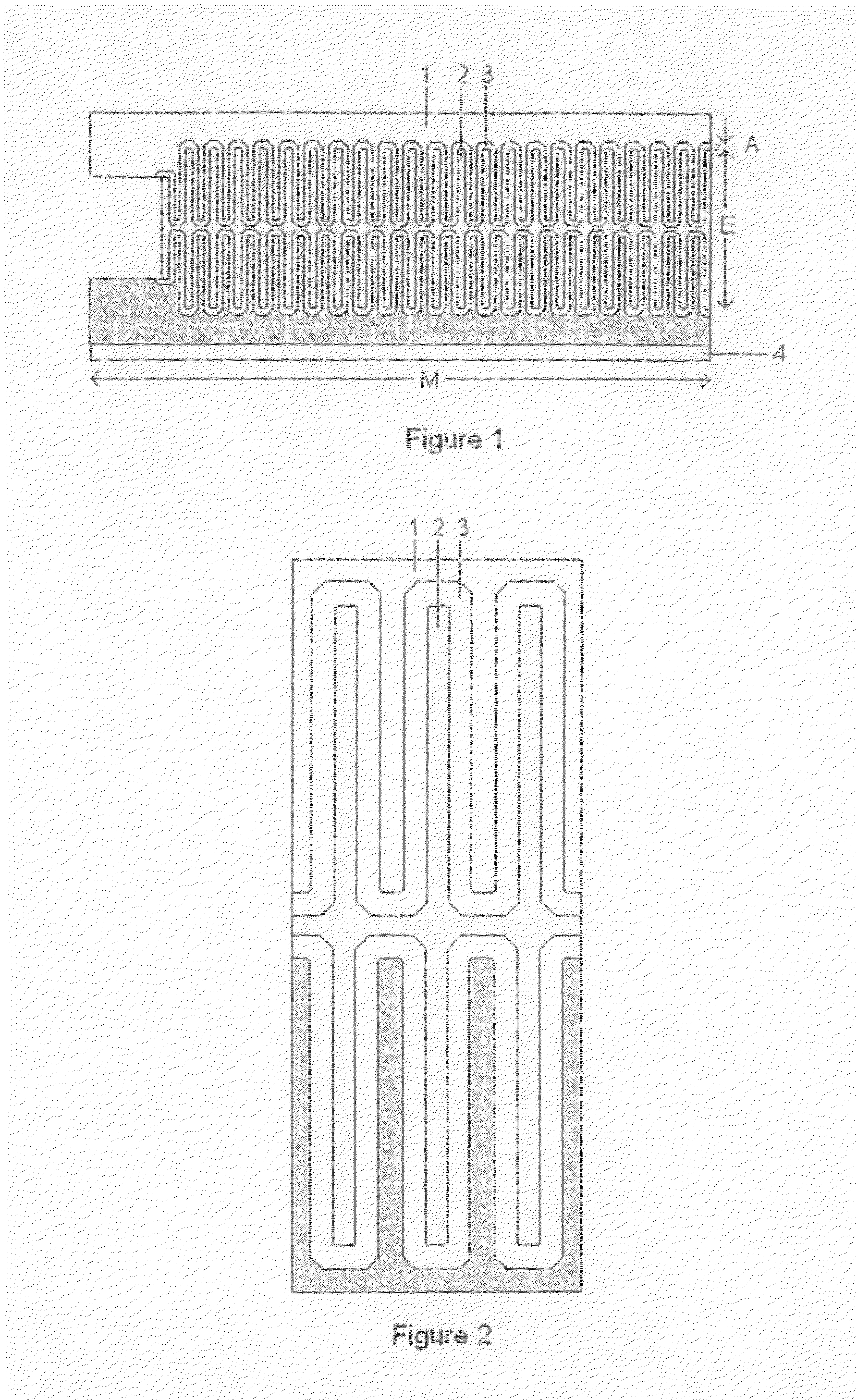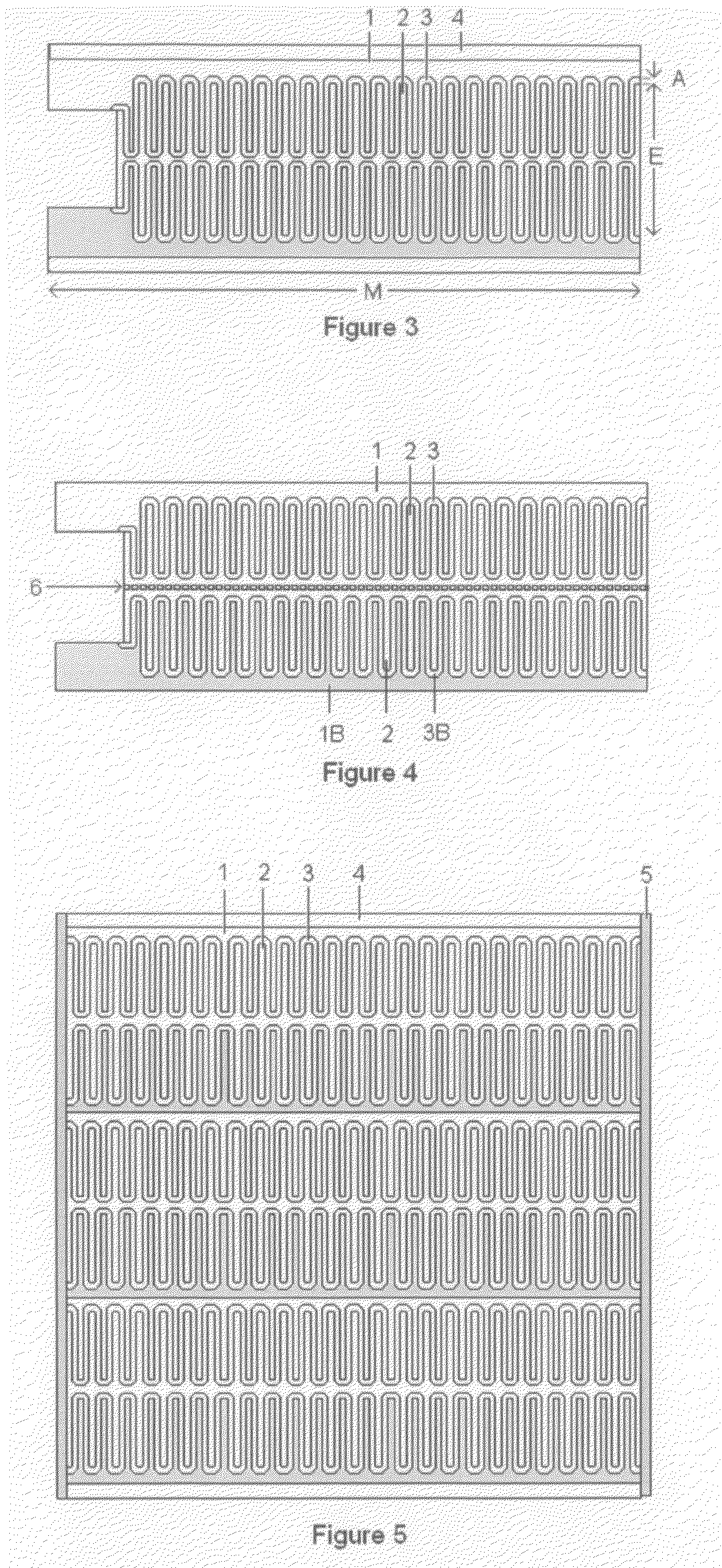High-Power Battery
- Summary
- Abstract
- Description
- Claims
- Application Information
AI Technical Summary
Benefits of technology
Problems solved by technology
Method used
Image
Examples
example 1
[0045]Table 3 shows the resistances of active material of 1 cm3 volume of a comparison battery in which the active material is made (from a paste) with a layer thickness of 100 μm and a battery of the present invention in which the active material is an oxidation-formed layer of 50 nm thickness. The assumed resistivity ρ is 100,000Ω-cm for each active material. The ratios are of the thicknesses and resistances of the active materials in the comparison battery and the battery of the present invention. Batteries with lower series resistance have higher power.
TABLE 3ComparisonPresentbatteryinventionRatioActive material layer thickness100 μm 50 nm 2000:1Resistance R = ρ L2 / V 10 Ω2.5 μΩ4,000,000:1
example 2
[0046]Table 4 shows a comparison of electrodes of a thin-film battery with active material deposited on a flat substrate of 25 μm thickness and an electrode of a battery of the present invention with a metal sponge of 10 m2 surface area per cm3. Each electrode has an active material layer of 50 nm thickness. The total volume of each electrode is 1 cm3. The ratios show that the battery of the present invention has more active material per unit volume and therefore more energy and power than a prior art thin-film battery.
TABLE 4Thin-filmPresentbatteryinventionRatioArea of active material400 cm2 10 m21:250Volume of active material 2 mm3500 mm31:250
[0047]Batteries made by the present invention have the following unique characteristics:[0048]1. The electrodes of the battery have at least one side comprising high porosity metal sponge with interconnected dendrites or interconnected metal branches having small feature size and high specific surface area.[0049]2. The active material of the ...
PUM
 Login to View More
Login to View More Abstract
Description
Claims
Application Information
 Login to View More
Login to View More - R&D
- Intellectual Property
- Life Sciences
- Materials
- Tech Scout
- Unparalleled Data Quality
- Higher Quality Content
- 60% Fewer Hallucinations
Browse by: Latest US Patents, China's latest patents, Technical Efficacy Thesaurus, Application Domain, Technology Topic, Popular Technical Reports.
© 2025 PatSnap. All rights reserved.Legal|Privacy policy|Modern Slavery Act Transparency Statement|Sitemap|About US| Contact US: help@patsnap.com



